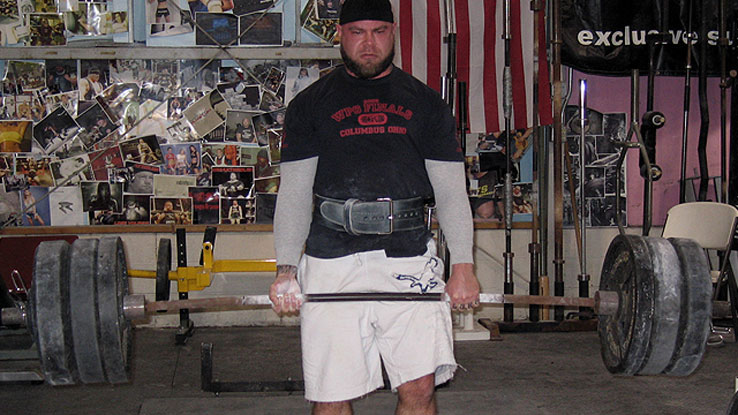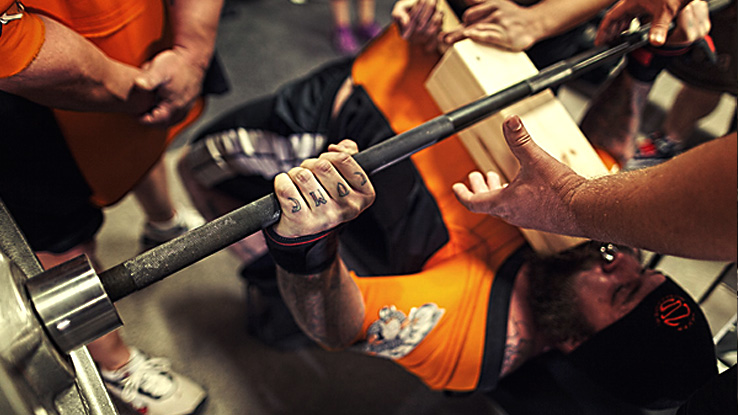Here's what you need to know...
- The more experienced you are in the gym, the easier it is to hit a plateau.
- To break through a training plateau, use 50-100 rep sets with short rest-pauses interspersed throughout.
- For a 50-rep set, perform 25 reps consecutively, take a 15 second rest-pause, then bang out as many reps as you can before rest-pausing again.
- The goal is to reach 50 or 100 reps with 6 or fewer rest-pauses or subsets.
- This method can used for strength, hypertrophy, or as a fat burning finisher, depending on how you set it up.
Take off your shirt and stand in front of a mirror. Do you look any different than you did a few months ago? Be honest.
Now check your training log. Have the weights gone up? Can you do more reps with the same amount of weight? Have you beaten your 1RM or 3RM on the key lifts recently or have things kinda stalled out?
If things aren't looking good, you may have hit a plateau. That's okay, it happens to every advanced lifter. To blast through it, you can't just keep doing the same things you've been doing in the gym. It's time to get a running start and juggernaut through that wall.
One of the most intense ways to break a training plateau is by doing 50 or 100-rep sets. It's simple. Here's one way to do it with the 50 rep goal:
- Select a poundage that will allow you to perform 25 solid consecutive repetitions.
- Upon completion of the 25th rep, take a 15-second rest-pause while breathing deeply.
- Continue on by gutting out a few more reps to failure then take another rest-pause of 15 seconds.
- Continue in this manner until you hit a total of 50 reps.
Hypothetically, your rep patterns might appear as follows: 25, 8, 6, 5, 3, and 3 = 50 reps. If you have the guts, go for 70-100 reps and extend your rest-pauses to 20 seconds between subsets.
A goal to shoot for when doing a 50 or 100-rep set is to get them completed in 6 subsets or less. Bodybuilders or those with hypertrophy goals will use a weight that's 75% of a 10-rep maximum and do as few subsets as necessary to achieve a 50 or a 100-rep set. To really make them intense, they only take a 6-second rest-pause between each subset instead of 15 seconds.
Another variation of 100s is performed in the following manner:
- First Set 40 reps
- Rest-Pause 60 seconds
- Second Set 30 reps
- Rest-Pause 30 seconds
- Third Set 20 reps
- Rest-Pause 10 seconds
- Fourth Set 10 Reps

You'll have to tweak the 50 or 100-rep set depending on whether you're using a compound or isolation exercise. For example, you use less energy doing leg extensions than you do with squats. And, of course, if you hit your goal of 50 or 100, you'll increase the weight the next time you try it.
Aside from using 50 or 100-rep sets to break plateaus, you can use them as a muscle-building modality. Try them in giant-set fashion where you do 5 exercises for a selected muscle group (quads, chest, or back, etc.) for 20 reps each. A worthy challenge would be to complete the 100 reps in 100 seconds.
You can also use them as brutal finishers or fat-burners. For instance, do 100 reps of each of the following exercises in giant set fashion (finish all 100 reps of an exercise before moving on to the next one in the series).
- A. Leg Press
- B. Lat Pulldown
- C. Hammer Bench Press
- D. Kettlebell Swing
Do 100 reps of each, taking as few sets as necessary, with as little rest as necessary. Move from one exercise to another in rapid succession. The only caveat is that you'd need to use lighter weights, something that would allow you to get about 50-60 reps on the first subset of each exercise.
That way, the lighter weights used in the giant sets can be done at the end of a workout without interfering with the recovery of any one muscle group. For instance, even if you worked chest the day before doing this particular giant set, the load would be sufficiently light enough so that doing 100 reps for chest wouldn't interfere with its recovery and would likely even help.
If you're training for strength, use the 100-rep concept as a finisher. For example, if you're working quads, do your normal routine and then do 100 reps of leg extensions after you're done with everything else.
If strength and power isn't the primary objective, do the 50 or 100 rep routines as any first, second, or third exercise, be it a compound exercise like the squat or a single-joint exercise like the leg extension.
If you're doing them to burn fat, you can do them daily at the end of your workout until you've reached your fat burning goals.
Dig deep and smash that plateau!





